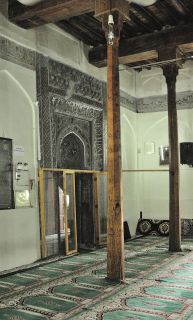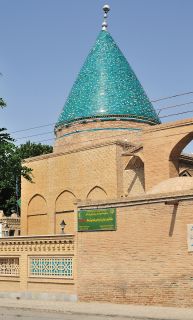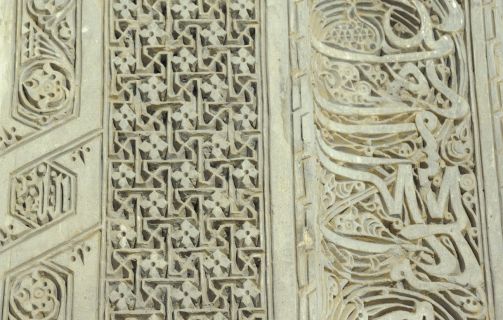Bestam Minaret
Iran Bestam 12th Century
Seljuk-llkhanid
This social services complex consists of buildings belonging ta different periods, all developed around the tomb of Bayazid Bastami. These include the Bayazid Bastami Tomb, a Seljuk minaret, part of a Seljuk wall, the tomb of lmamzadeh Muhammad Bistam Mirza, two other tombs and a small mosque. A portal in the shape of an iwan leads ta the courtyard. Directly opposite is another portal leading ta a space in the shape of an iwan.
Traces in the mosque and tomb of Muhammad Bistam Mirza belong to the pre.Seljuk period. Beyazid Bestami died in 874 or 877 in this region, and it is suggested the present tomb was built immediately after his death.
The minaret and the wall behind the tomb date from the Seljuk period. The minaret has a cylindrical body which tapers towards the top. Since the wall adjacent to the minaret has the same technique and pattern, it can be attributed to the same period. The inscription on the minaret indicates a date of 1120.
The mosque was decorated with stucco during the reign of Ghazan Khan of the Ilkhanid period. Most of the subsequent work was ordered by Muhammad bin al-Hüssain bin Ebu Talbud Damghan. His name and the construction date of 1299 are written on the mihrab.
Most of the decoration inside the building was added during the repair work carried out by Ghazan Khan. The name of Muhammad bin al-Hüssain bin Ebu Talbud Damghan, who captured the region, is also mentioned on the mihrab. The mihrab also has an inscription which states that it was built in 1299.














